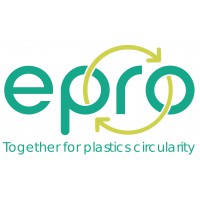How to keep a sustainable PET recycling industry in Europe
The European PET Bottle Platform is an initiative that provides PET bottle design guidelines for recycling, evaluates PET bottle packaging solutions and technologies and facilitates understanding of the effects of new PET bottle innovations on recycling processes. This initiative fully supports a circular economy for the European PET value chain. EPBP assessments are performed ensuring strict business confidential information protection and the opinions are fully recognized by decision makers that source PET bottle packaging solutions.
About PET market in Europe
- PET is the most recycled plastic packaging material in Europe.
- 5MT of PET has been placed in EU27+ 3 market in 2022
- Packaging accounted for over 97% of the 5 million tonnes of PET products placed on the market in 2022. The vast majority were bottles, at about 3.4 million tonnes, followed by sheet (trays) (circa 1 million tonnes) and films (370,000 tonnes)
- Bottles represent the 68% of total PET use in the market
- Approximately 80% of bottles were collected and sorted for recycling across Europe
- The estimate of recycled content in the bottles is 24% in 2022 vs 17% for 2020
- The installed washing capacity in the EU27+3 region was around 3 million tonnes in 2022, This was an
addition of 200,000 tonnes to PET washing capacity in relation to 2020. - Source: ICIS report (Petcore_NMWE_UNESDA_PRE), PET MARKET IN EUROPE, STATE OF PLAY, 2022,
- For more details you may visit https://www.petcore-europe.org/images/pet/PET_report_V3.pdf
Regulatory Framework
A lot has changed for the PET bottle value chain since the adoption of the Plastics Strategy by the European Commission. On the top of higher recycling targets and a new calculation point, introduced with the revised Packaging and Packaging Waste Directive (EU) 2018/852, the recently approved Directive (EU) 2019/904, known as “Single Use Plastics Directive” is going to change the PET bottle value chain scenario, by requiring:
- A mandatory 25% rPET content (calculated as average per EU Member State) in PET beverage bottles by 2025, to be increased to 30% by 2030.
- Specific separate collection for recycling targets for PET beverage bottles: 77% by 2025, and 90% by 2029, to be achieved by deposit return or separate collection schemes.
- New design requirements: single-use beverage bottles can be marketed only if caps and closures are designed to remain attached to the bottle.
Meanwhile, the Regulation (EU) 2022/1616 on recycled plastic materials and articles intended to come into contact with foods has been launched in October 2022.
It lays down the rules for:
- the sale of plastic materials and articles manufactured with a suitable recycling technology from waste plastic that are intended to be or can be reasonably expected to come into contact with food;
- the development and operation of recycling technologies, processes and installations to produce that recycled plastic;
- the use of plastic materials and articles in contact with food which have been, or are intended to be, recycled.
Challenge for the PET recycling industry
The challenge for the PET value chain is to support the achievement of present and future plastic packaging recycling targets in the EU Member States whilst taking into account the shift in rPET demand from textile to bottle-to-bottle and other packaging applications. This implies maintaining the availability of high quality rPET material that will, in turn, enable the industry to use recycled content in bottles without processing issues, discoloration and other visual defects. Innovation in PET bottle design and performance is essential, nevertheless it is also crucial that the quality of recycled material over time is not allowed to deteriorate through the indiscriminate use of additives, barrier materials, glues, sleeves and other components or materials. The EPBP initiative was created to support companies with their bottle design and innovation developments without disrupting the existing PET recycling industry.
Recommendation for the PET users
In order to support this initiative it is essential that packaging designers follow the EPBP guidelines for recycling which are available on the web site of European PET Bottle Platform. The design guidelines have been developed over many years and cover specifications and recommended design options for the body, label and cap of the bottle. All materials used must meet the legal requirements for materials and articles intended to come into contact with food.
The EPBP design guidelines are freely available to individuals, designers and manufacturing companies. They are a reflection of the average recycler capability and try to strike a balance between resource efficiency, the need for innovation and shelf differentiation and recycling practices in Europe. The purpose of the guidelines is to encourage companies that design and market materials and components, intended to be used in PET bottles, to apply the principle of due diligence.
Companies are encouraged to bring their bottle packaging solutions to the European PET Bottle Platform to obtain an objective third party assessment of the impact on recyclability and hence sustainability of their products. Packaging solutions are assessed by the EPBP technical expert panel whilst protecting applicant’s confidential information, thus allowing the evaluation of novel packaging solutions when they are still in the R&D phase and changes are possible to avoid negative recycling issues.
About EPBP
The European PET Bottle Platform (EPBP) is a voluntary initiative supported by the Natural Mineral Waters Europe (NMWE), Petcore Europe and the European non-alcoholic beverages association (UNESDA).
The Platform consists of technical experts in the field of PET production, design and recycling, whose only objective is the evaluation of new technologies and providing an independent and confidential assessment of their impact on the PET recycling processes across Europe.
EPBP has established several test procedures in order to assess the impact on recycling of new packaging technologies. Products that pass the tests should not cause any problems during recycling.
For more information, click here

 Member Login
Member Login
 News
News

_1713772260.png)




